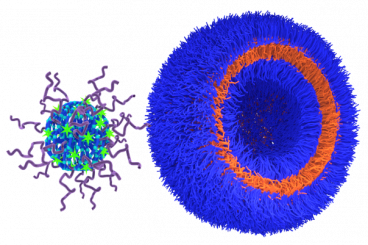
Colin Bonduelle
Senior researcher

The polymers designed in our team convey chemical, physical or biological functionalities used to form self-assembled structures capable of interacting with the biological environment. Our preferred structures are polymer-based vesicles, named polymersomes, but also micelles, polyionic complexes (PIC) and liquid-liquid demixed phases (coacervates), which are all obtained through non-covalent interactions. Their reversibility is essential in the context of biocompatibility. Importantly, those structures rarely form under equilibrium conditions, and we study how the ‘thermodynamic and kinetic landscapes’ during the self-assembly process both impact their sizes and morphologies, combining light & neutron scattering methods with advanced imaging techniques. This fine-tuning of interactions enables us performing self-assembly in more controlled way and designing more sophisticated structures. In particular, the use of microfluidic mixing devices helps us achieving self-assembly in reproducible way and increasing the loading rate of bioactives species (e.g. chemotoxic drugs) or to co-assemble polymers with inorganic nanoparticles (e.g. gold or iron oxide).